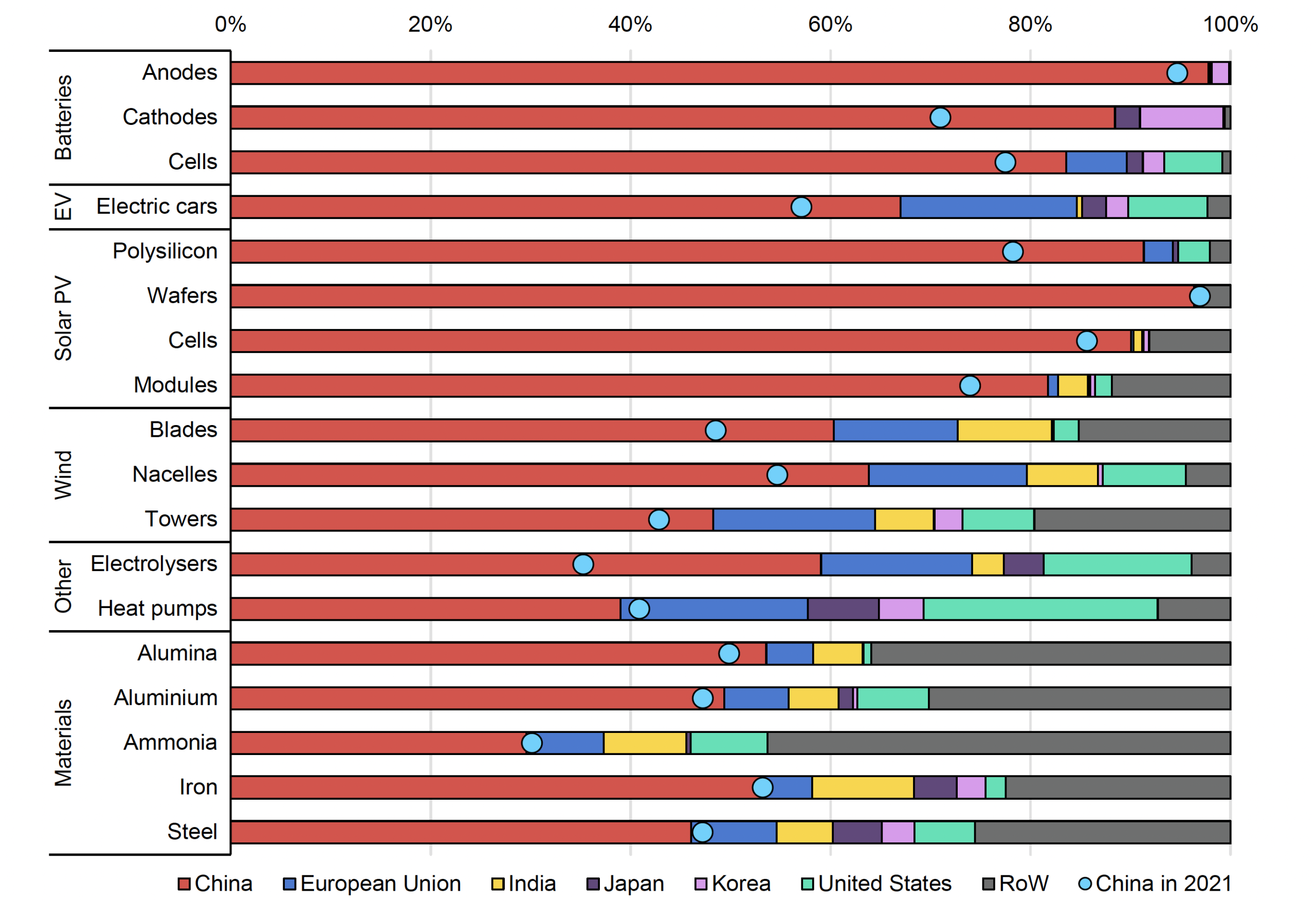In the Vortex of Great Power Competition: Climate, Trade, and Geostrategic ...
Geopolitical tensions increasingly threaten global climate cooperation. Great power competition between the United States, the European Union, and China complicates effective climate action by embedding it within broader geopolitical conflicts. International cooperation between these actors has been pivotal for past successes, such as U.S.-China coordination preceding adoption of the 2015 Paris Agreement. Current geopolitical tensions reveal how economic pressures, stakeholder interests, and electoral politics at the national level can overshadow climate diplomacy, preventing a global solution to a quintessential collective action problem. Nowhere are these tensions more evident than at the nexus of climate and trade policy.
Accordingly, recent climate policies of the U.S., EU, and China reflect divergent strategies shaped by domestic politics and economic priorities. Climate policy in the U.S. has oscillated dramatically across administrations, evidencing deeply partisan views and the influence of incumbent interests in what is now the world’s largest oil and gas producer. Europe demonstrates policy continuity with ambitious decarbonization targets, yet faces growing headwinds from domestic electoral shifts, regional security risks, and persistent concerns about economic competitiveness. As the world’s largest emitter, China embodies a paradox, simultaneously increasing fossil fuel consumption while expanding its dominant lead in low-carbon technology manufacturing, deployment, and innovation.

Figure 1. Installed Low-Carbon Technology Manufacturing Capacity by Country/Region, in % (2023). Note: RoW = Rest of World. Source: IEA (2023).
More recently, climate and trade policies have becoming increasingly intertwined with geopolitical strategy. Countries routinely deploy trade-related climate measures to secure competitive advantages and influence geopolitical dynamics. Concurrently, supply chains for low-carbon technologies and critical raw materials have emerged as strategic battlegrounds, highlighting security concerns and prompting efforts to reduce dependency on rivals, notably China’s market leadership achieved through targeted state support, vertically integrated production, and economies of scale and agglomeration. Trade interventions can provoke retaliatory action, however, and interfere with efficient resource allocation in line with comparative advantage, threatening to increase the cost and timeline of decarbonization.
Scenario analysis offers useful insights into how geopolitical dynamics can shape future climate action. In a context of significant uncertainty, scenario analysis provides a structured approach for assessing multiple plausible trajectories and how strategic choices can shape future outcomes. As such, it can help explore alternative strategic equilibria, where tipping points in political or economic conditions may propel actors towards different responses. Employing a two-level game framework, which emphasizes the interplay between domestic politics and international cooperation, a new Working Paper examines three scenarios that illuminate how economic interests, political constraints, and strategic rivalries align or conflict with global climate objectives and international coordination.
The first scenario, competitive cooperation, envisions intensified competition that delays, but does not altogether derail, global climate action. While sectoral priorities diverge, great powers vie for technological leadership, stimulating innovation, cost declines, and market-driven deployment. U.S. subnational and private sector momentum, sustained EU policy ambition, and continued Chinese industrial strategy all contribute to emission reductions despite diplomatic tensions and fragmented markets. Cooperation on less sensitive issues, such as emissions reporting standards or non-CO2 gases, allows limited but productive engagement at the international level, while efforts to expand spheres of influence and cooperate bilaterally accelerate decarbonization in the developing world.
In the second scenario, geopolitical fragmentation severely undermines climate action. Heightened nationalism, economic protectionism, and strategic hostilities dominate, with each power prioritizing domestic economic and political objectives over collaborative climate goals. The U.S. embraces its fossil fuel interests and joins forces with other petrostates to obstruct global climate progress; the EU is paralyzed by internal divisions and fraying security alliances; and China doubles down on economic and political nationalism, further alienating its trade partners around the world. Formerly integrated markets splinter into competing trade blocs, resources are diverted to a new global arms race, and emissions rise unchecked as climate action stagnates, leading to a vicious cycle.
A third scenario envisages a dramatic reversal of traditional climate leadership roles, with China assuming global leadership. Driven by economic self-interest, public pressure, and geostrategic ambitions, China substantially accelerates its decarbonization efforts at home and – through vehicles such as the Belt and Road Initiative – abroad. As domestic reforms and international investments bolster China’s global status, the U.S. cedes influence in a world that has moved beyond peak fossil fuel demand. Striving to lower its traditional dependence on the U.S. for military security and increasingly for energy, Europe cautiously turns to China as a pragmatic partner in building renewed support for multilateral cooperation. A new world order emerges.
As the foregoing scenarios demonstrate, navigating the evolving geopolitical landscape requires a delicate balancing act to create space for climate action. The fraught interplay of competition and cooperation between the U.S., the EU, and China presents significant challenges, but also harbors new opportunities for decarbonization. Despite the risks posed by current economic and political trends, confidence building measures and policy alignment remain possible. Rebuilding bilateral and multilateral communication channels, insulating climate cooperation from broader geopolitical disputes, and enhancing domestic policy continuity can all be constructive ways forward, but in the end climate goals need to align with national interests for decisive and sustained progress.
Link to the full working paper:
Legal Disclaimer:
EIN Presswire provides this news content "as is" without warranty of any kind. We do not accept any responsibility or liability for the accuracy, content, images, videos, licenses, completeness, legality, or reliability of the information contained in this article. If you have any complaints or copyright issues related to this article, kindly contact the author above.
